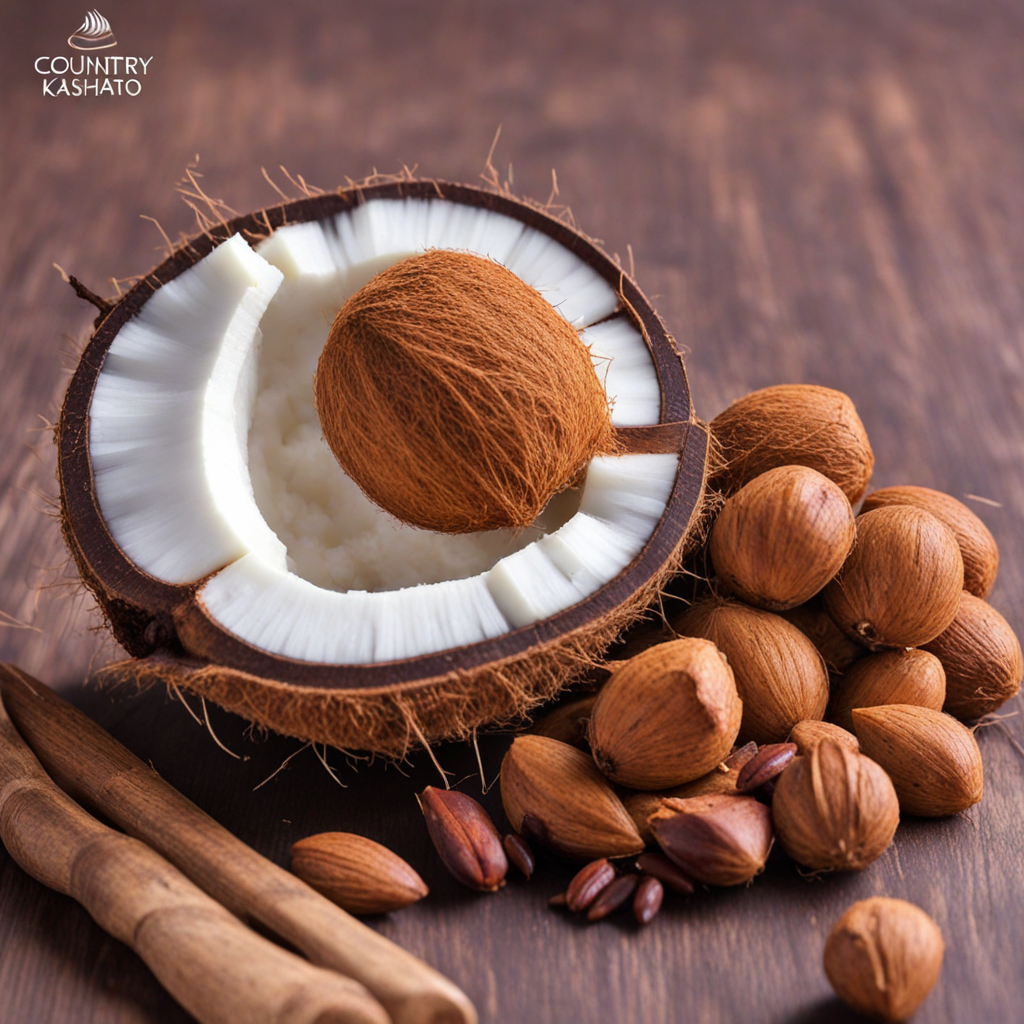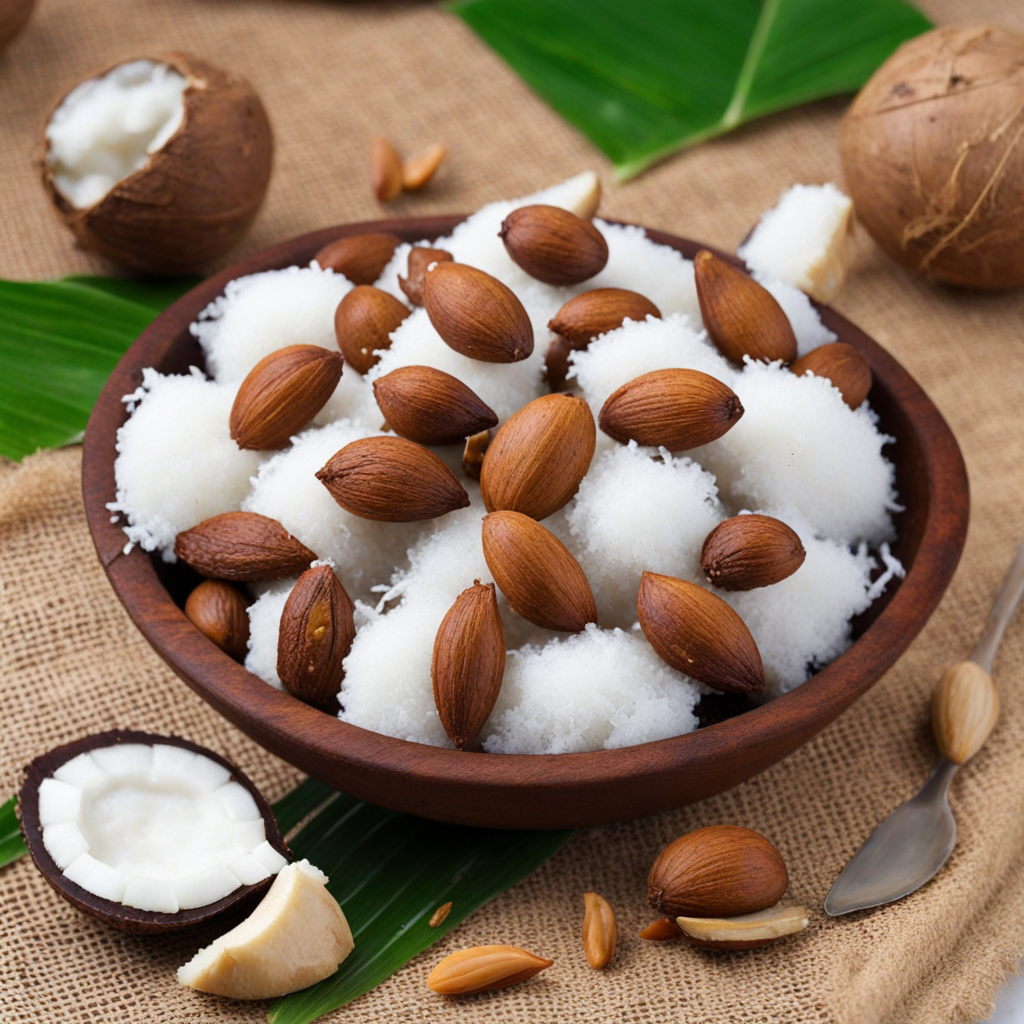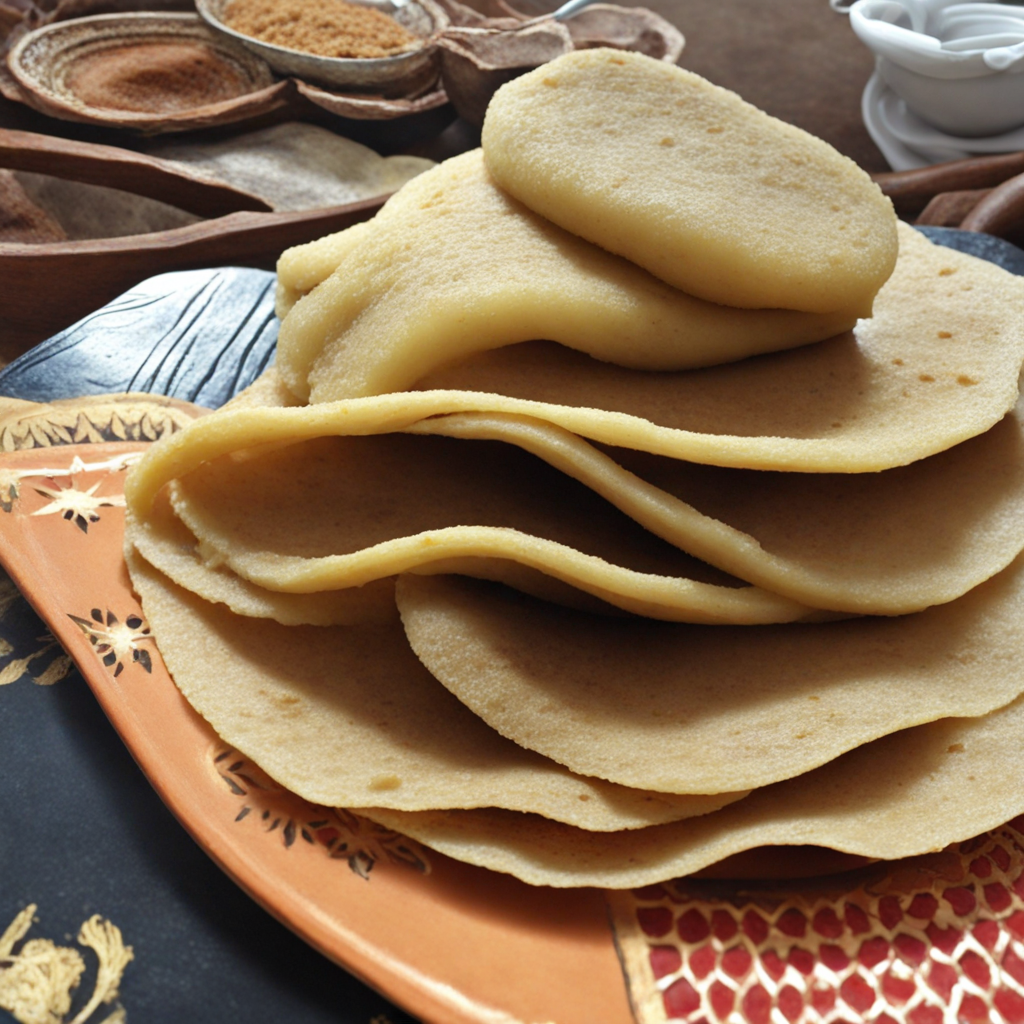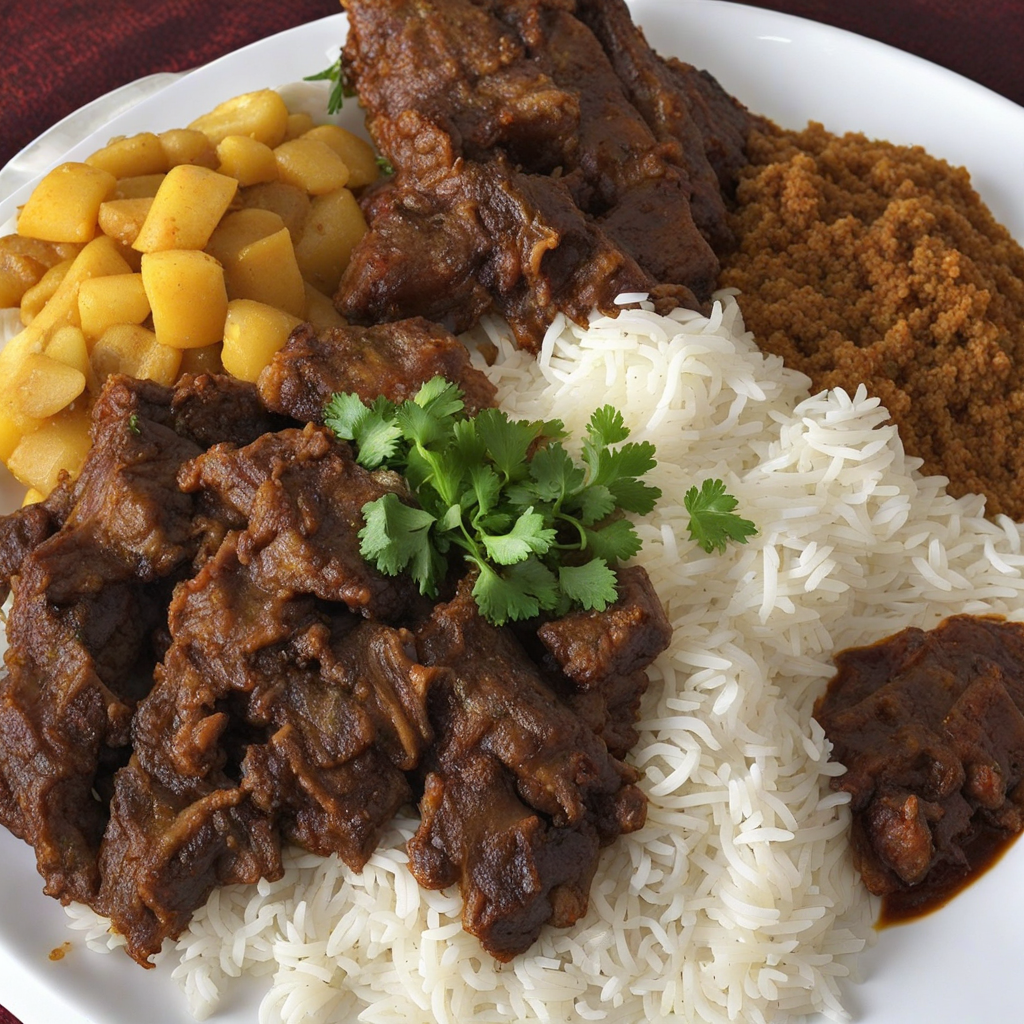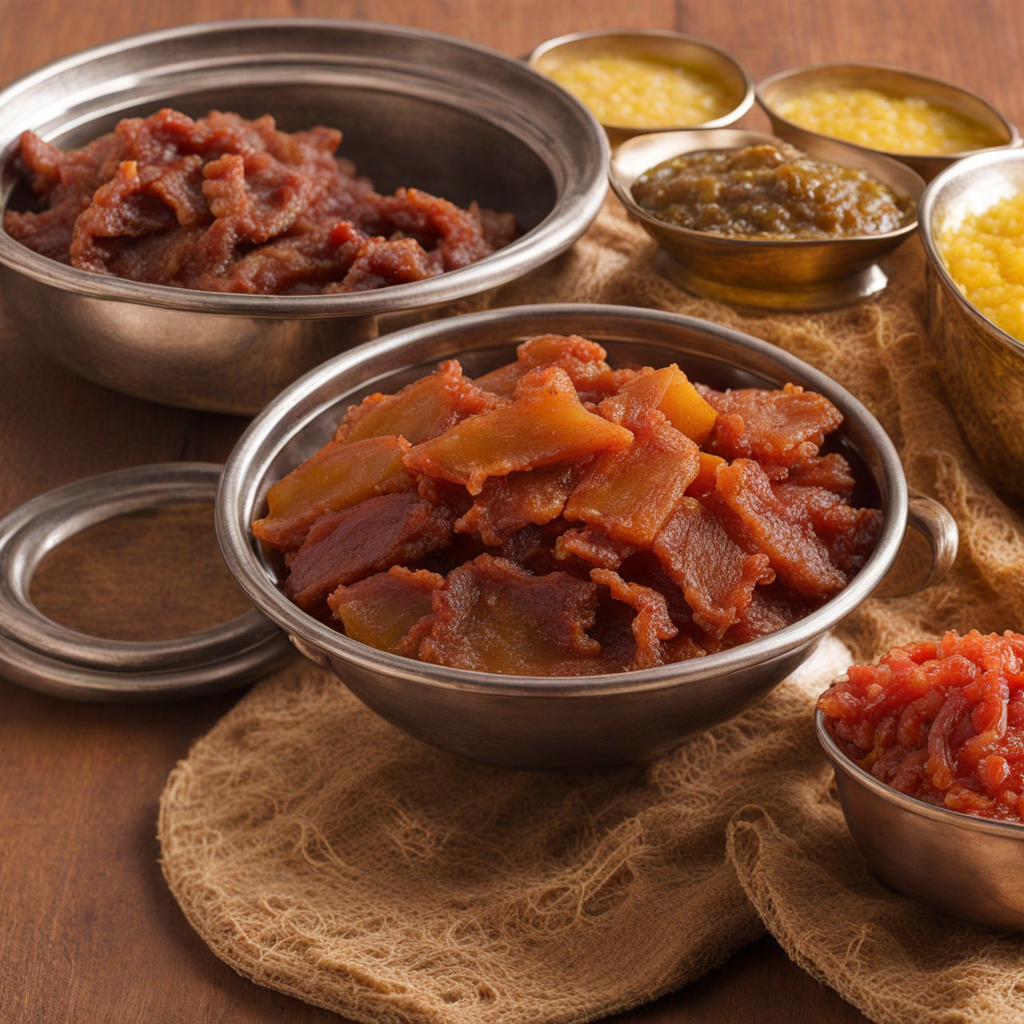Kashaato
Kashaato is a traditional Somali dish that beautifully encapsulates the rich culinary heritage of the region. At its core, Kashaato is made from finely ground roasted grains, typically sorghum or millet, which are combined with water to create a thick, porridge-like consistency. The grains are often toasted before grinding, imparting a deep, nutty flavor that sets the foundation for this delightful dish. This hearty base is frequently enhanced with a variety of spices, such as cumin and coriander, which lend warmth and complexity to the overall profile, making it a comforting and satisfying meal. What sets Kashaato apart is its versatility and the way it can be paired with an array of ingredients. Common accompaniments include savory stews, often made with tender pieces of meat or fresh vegetables, that add a burst of flavor and texture. Additionally, Kashaato can be served with a drizzle of rich, spiced oil or a dollop of yogurt, creating a harmonious balance between the creamy and the savory. The dish is not just a meal; it represents a communal experience, often enjoyed during gatherings and celebrations, where everyone shares in the joy of eating together. The experience of enjoying Kashaato is unique, as it invites you to explore the flavors and textures of Somali cuisine. Each bite offers a gentle crunch from the grains, followed by the warmth of spices that linger on the palate. The dish is often accompanied by fresh vegetables or zesty salads that provide a refreshing contrast to the rich porridge, making it a well-rounded option for those looking to expand their culinary horizons. With its deep-rooted cultural significance and satisfying taste, Kashaato is a dish that promises to leave a lasting impression on anyone willing to embrace its distinctive flavors.
How It Became This Dish
The Story of كَشَاتُو (Kashato): A Culinary Journey from Somalia #### Origins Kashato, known in Somali cuisine as كَشَاتُو, is a traditional dish that holds a special place in the hearts and palates of the Somali people. Its origins can be traced back to the rich tapestry of Somali culinary traditions that have been influenced by the country’s geography, history, and cultural exchange with neighboring regions. Somalia, located in the Horn of Africa, has a unique blend of African, Arab, and Indian culinary influences due to its historical position as a trading hub. The Somali coast along the Indian Ocean facilitated trade with merchants from Arabia, Persia, and India, bringing spices, cooking techniques, and ingredients that would forever shape Somali cuisine. Kashato, a dish that typically consists of spiced meat, often goat or beef, cooked with a variety of fragrant spices, reflects these historical influences. The name "Kashato" itself is derived from the Somali word "kashato," which translates to "to mix" or "to blend." This is fitting as the dish is characterized by its combination of spices and ingredients that come together to create a harmonious and flavorful experience. Traditionally, Kashato is prepared during special occasions and gatherings, such as weddings, Eid celebrations, and communal feasts, symbolizing not just sustenance but also community and togetherness. #### Cultural Significance Kashato is more than just a meal; it embodies the spirit of Somali hospitality and communal living. In Somali culture, sharing food is a vital expression of generosity and social bonding. When Kashato is served, it often comes with a side of rice or flatbread, encouraging communal dining where family and friends gather around to share the meal. This practice fosters connection and reinforces social ties, especially during significant life events or celebrations. The preparation of Kashato is often a communal affair, with family members and friends coming together to prepare the dish. Older generations pass down their knowledge of spices and cooking techniques to younger ones, ensuring that the tradition of Kashato continues. This process of learning and sharing is rooted deeply in Somali culture, where food serves as a medium for storytelling and imparting cultural values. In addition to its role in communal gatherings, Kashato also has a place in the larger narrative of Somali identity. As the Somali diaspora has spread across the globe due to civil unrest and migration, dishes like Kashato have become symbols of nostalgia and cultural heritage for many Somalis living abroad. These dishes allow individuals to reconnect with their roots and share their culture with new friends and communities. #### Development Over Time The preparation of Kashato has evolved over time, influenced by the availability of ingredients, regional variations, and the diaspora experience. Traditionally, Kashato was cooked over an open flame or in a clay pot, allowing the meat to absorb the flavors of the spices and slow-cook to tenderness. The spices used in Kashato often include cumin, coriander, cardamom, and sometimes chili for a touch of heat, reflecting the diverse spice trade that has historically crossed through Somalia. With the advent of modern cooking methods and the availability of new ingredients in urban centers, the preparation of Kashato has adapted. Some cooks now use pressure cookers or slow cookers, which reduce cooking time while still delivering the dish’s characteristic flavors. Urbanization has also led to the fusion of Kashato with other culinary traditions, resulting in diverse interpretations of the dish. For example, in cities with significant Somali populations, such as Minneapolis or London, Kashato may be paired with local ingredients and served alongside other cultural dishes, creating a unique culinary dialogue. Moreover, the diaspora has played a crucial role in the global recognition of Kashato. As Somali communities settled in different countries, they brought their culinary traditions with them, leading to an increased interest in Somali cuisine. Restaurants specializing in Somali dishes have emerged in various parts of the world, introducing Kashato to a broader audience. These establishments often strive to maintain authenticity while incorporating modern elements to appeal to diverse palates. In recent years, there has been a resurgence of interest in traditional Somali cooking, with younger generations seeking to reclaim and promote their culinary heritage. Social media platforms have become popular avenues for sharing recipes, cooking techniques, and the cultural stories behind dishes like Kashato. Home cooks and food enthusiasts document their Kashato-making processes, often highlighting the communal aspects of the meal, as they gather friends and family to share in the experience. #### Conclusion Kashato is a dish steeped in history, culture, and community. From its origins in the coastal towns of Somalia to its emergence as a beloved dish among the Somali diaspora, it has evolved yet retained its core significance as a symbol of hospitality and togetherness. As the world continues to embrace culinary diversity, Kashato stands as a testament to the resilience of cultural traditions and the power of food to forge connections across generations and geographies. As we explore the culinary landscape of Somalia, we find that each dish tells a story, and Kashato is one of the most flavorful chapters in that narrative. Its rich spices, communal preparation, and cultural importance remind us that food is not just about nourishment; it is about identity, belonging, and the shared human experience. In every bite of Kashato, one can taste the history of a people and the love that binds them together, making it a dish that will continue to be cherished for generations to come.
You may like
Discover local flavors from Somalia


